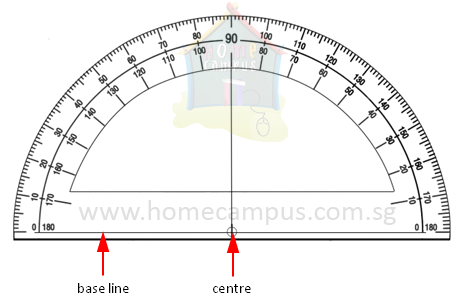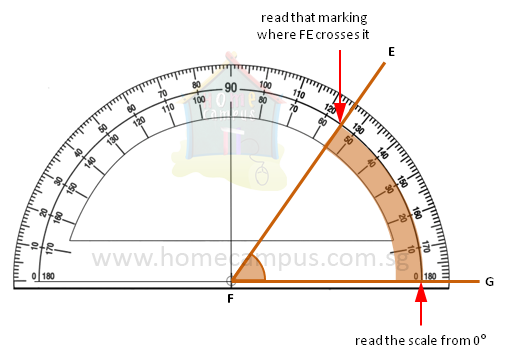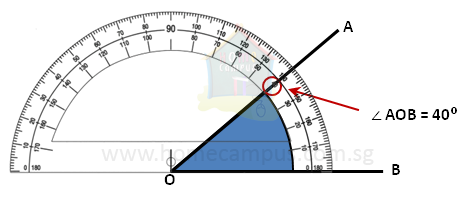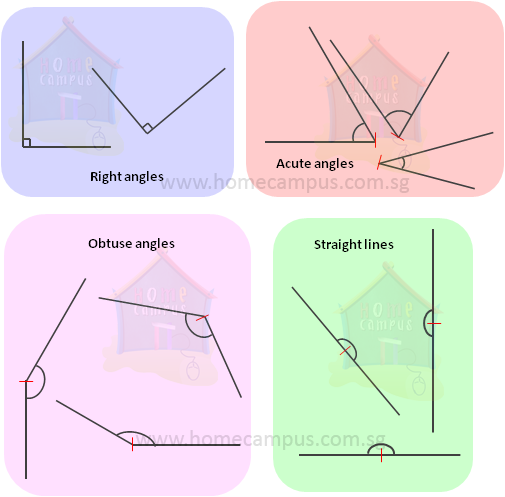What is an Angle and how to measure it?
1. What is an angle?
An angle is the amount of curve between two lines meeting or crossing at a point.

∠ is used to denote an angle.
In the figure above, lines AO and OB meet at O to make the angle AOB or ∠AOB.
O is the vertex of ∠AOB.

∠ is used to denote an angle.
In the figure above, lines AO and OB meet at O to make the angle AOB or ∠AOB.
O is the vertex of ∠AOB.
2. How do we measure angles?
Angles are measured in degrees using a protractor.

To measure the angle EFG between two lines EF and FG drawn below:

Another example:


To measure the angle EFG between two lines EF and FG drawn below:

- Place the base line of the protractor over one of the lines, say, FG.
- Place the centre of the protractor on the vertex i.e. F.
- Read the scale starting from 0° at FG to where FE crosses it. That reading is ∠EFG.
In our case, ∠EFG = 55°
Another example:

3. Special angles
Following are some special angles:

- Right angle
When two lines form an angle of 90°, the angle is known as a right angle and the two lines are said to be perpendicular to each other. - Acute angle
Angles less than 90° are acute angles. - Obtuse angle
Angles more than 90° are obtuse angles. - Straight line
When two lines meet at 180° they make a straight line.
